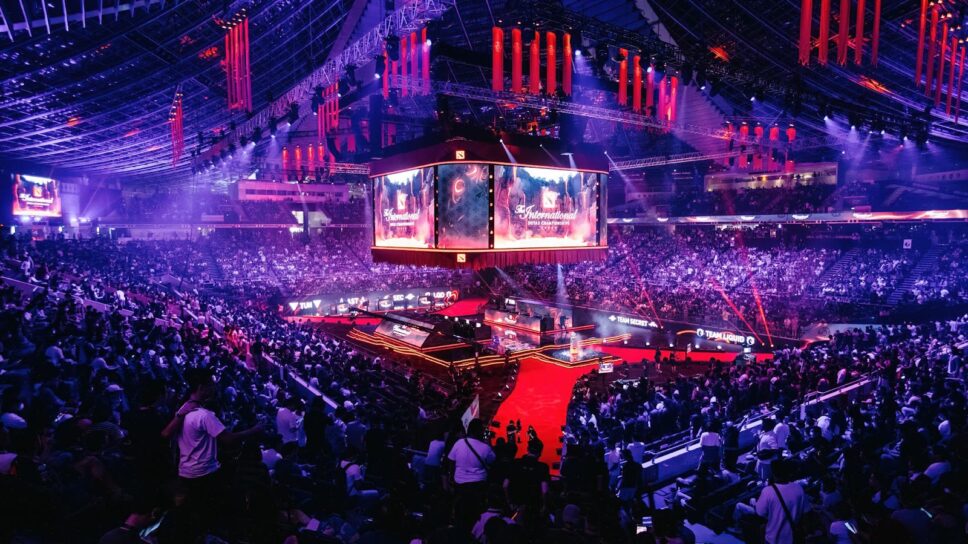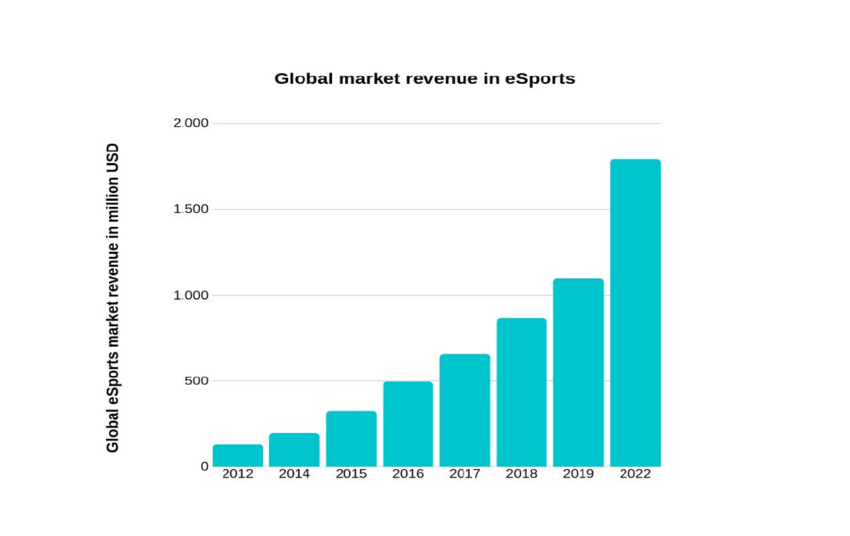Introduction
Once a niche hobby, esports has catapulted into the mainstream, captivating millions worldwide and establishing itself as a legitimate and lucrative sector within the broader landscape of sports and entertainment. With tournaments drawing audiences that rival traditional sports events and players achieving rock star status, the rise of esports is a phenomenon worth exploring. This article delves into the history, growth, and impact of competitive gaming, examining how it has evolved from basement LAN parties to multimillion-dollar arenas.
The Genesis of Esports

Esports, short for electronic sports, traces its roots back to the 1970s and 1980s, with the first known video game competition occurring in 1972 at Stanford University. Players competed in “Spacewar!” for a year’s subscription to Rolling Stone magazine. The 1980s saw the rise of arcade gaming, with games like “Pac-Man” and “Donkey Kong” becoming household names and setting high scores a matter of local prestige.

The true competitive spirit of gaming began to take shape with the advent of multiplayer games and the emergence of local area network (LAN) parties in the 1990s. Titles like “Doom” and “Quake” allowed players to face off directly, fostering a sense of competition that was previously limited to high scores.
The Evolution of Competitive Gaming
The late 1990s and early 2000s marked a significant turning point with the introduction of broadband internet, which made online multiplayer gaming feasible. Titles like “StarCraft,” “Counter-Strike,” and “Warcraft III” became pillars of the burgeoning esports scene. South Korea, in particular, played a crucial role in this era, with “StarCraft” tournaments drawing massive crowds and the government recognizing esports as a legitimate profession.

As technology advanced, so did the complexity and reach of esports. Games like “League of Legends” (LoL) and “Dota 2” introduced complex team-based gameplay that required not only individual skill but also strategic teamwork and coordination. These games also popularized the concept of “champions” or “heroes,” adding a layer of strategy and personalization that captivated players and audiences alike.
The Rise of Professional Esports

The professionalization of esports began in earnest in the late 2000s and early 2010s. Major esports organizations formed, offering players contracts, salaries, and sponsorship deals. The establishment of leagues and tournaments, such as the League of Legends Championship Series (LCS) and The International for Dota 2, provided structured competition and substantial prize pools.

Streaming platforms like Twitch and YouTube Gaming played a pivotal role in bringing esports to a global audience. These platforms allowed fans to watch live matches, follow their favorite players, and engage with the community in real-time. The accessibility and interactivity of streaming contributed significantly to the growth of esports, turning it into a spectator sport on par with traditional sports.
Esports and Mainstream Recognition

The mainstream recognition of esports has been a gradual but undeniable process. Major sports networks, such as ESPN and TBS, have started broadcasting esports events, and esports segments have become a regular feature in sports news coverage. The inclusion of esports in the Asian Games as a demonstration sport in 2018 and its planned inclusion as a medal event in the 2022 Asian Games further cement its status as a legitimate sport.
Universities and colleges have also embraced esports, with many institutions offering scholarships and establishing varsity esports teams. This integration into academic institutions highlights the growing acceptance and legitimacy of esports within traditional structures.
The Economics of Esports

The financial growth of esports has been staggering. According to Newzoo, a market research firm specializing in gaming, the global esports market was valued at over $1 billion in 2020, with projections for continued growth. Revenue streams for esports include sponsorships, media rights, advertising, merchandise, and ticket sales. Major brands like Coca-Cola, Intel, and Nike have invested heavily in esports, recognizing the potential to reach a young and engaged audience.
Prize pools for major tournaments have also reached astronomical figures. The International, an annual Dota 2 tournament, has consistently boasted prize pools exceeding $30 million, crowdfunded largely by the game’s player base. This level of financial incentive has transformed esports into a viable career path for many talented individuals.
The Global Impact of Esports

Esports is a global phenomenon, with significant regional variations in game popularity and competitive structures. South Korea remains a powerhouse, particularly in games like “StarCraft” and “League of Legends.” The United States and Europe have strong scenes in games like “Fortnite,” “Call of Duty,” and “Overwatch.” China has emerged as a dominant force in “Dota 2” and mobile esports, with games like “Honor of Kings.”

The international nature of esports fosters a sense of community and competition that transcends geographical boundaries. Major international tournaments, such as the League of Legends World Championship and the Intel Extreme Masters, attract teams and fans from around the world, celebrating the global spirit of esports.
The Social and Cultural Impact of Esports
Esports has a significant social and cultural impact, promoting values of teamwork, strategic thinking, and digital literacy. It provides a platform for individuals to connect, collaborate, and compete, fostering a sense of community among players and fans. The inclusive nature of esports allows people from different backgrounds to participate and excel, breaking down barriers of race, gender, and nationality.

Esports also offers opportunities for individuals with disabilities to participate in competitive activities. Adaptive technologies and game designs that accommodate different needs ensure that esports is accessible to a broader audience, promoting inclusivity and diversity.
Challenges and Criticisms

Despite its many successes, esports faces several challenges and criticisms. Concerns about the mental and physical health of players have been raised, as the demands of professional gaming can lead to issues such as burnout, repetitive strain injuries, and poor mental health. Organizations are beginning to address these issues by implementing wellness programs and promoting a healthier work-life balance for players.
Another criticism is the lack of standardization and regulation within the industry. Unlike traditional sports, which have governing bodies and standardized rules, esports is fragmented across different games, each with its own competitive structure and regulations. This fragmentation can lead to inconsistencies and challenges in maintaining fairness and integrity in competition.
The Future of Esports

The future of esports looks promising, with continued growth and innovation on the horizon. Advances in technology, such as virtual reality (VR) and augmented reality (AR), are likely to revolutionize the way games are played and viewed, creating even more immersive and engaging experiences for players and spectators. The integration of blockchain technology and non-fungible tokens (NFTs) could also impact the industry, offering new ways to monetize and engage with content.

The potential for esports to be included in the Olympic Games is another exciting prospect. While there are debates about which games would be suitable and how to align esports with the Olympic values, the inclusion of esports in the Olympics would represent a significant milestone in its recognition as a legitimate sport.
Conclusion
Esports has come a long way from its humble beginnings, evolving into a global phenomenon that rivals traditional sports in popularity, professionalism, and economic impact. As technology continues to advance and societal acceptance grows, the future of esports looks bright. Whether you’re a player, a fan, or simply a curious observer, the rise of esports is a testament to the power of human creativity, competition, and community in the digital age.
A collage of esports moments, including players celebrating, fans cheering, and iconic in-game action, capturing the essence of esports’ rise to prominence.
References
- Smith, T. (2020). “The History of Esports: From Humble Beginnings to Global Phenomenon.” Esports Journal.
- Johnson, M. (2019). “The Economics of Esports: Understanding the Financial Landscape.” Game Studies Quarterly.
- Kim, S. (2021). “South Korea’s Influence on the Growth of Esports.” International Journal of Gaming Studies.
- Davis, L. (2022). “The Social Impact of Esports: Building Communities and Breaking Barriers.” Digital Culture Review.
- Thompson, R. (2023). “The Future of Esports: Trends and Innovations.” Tech and Games Magazine.

